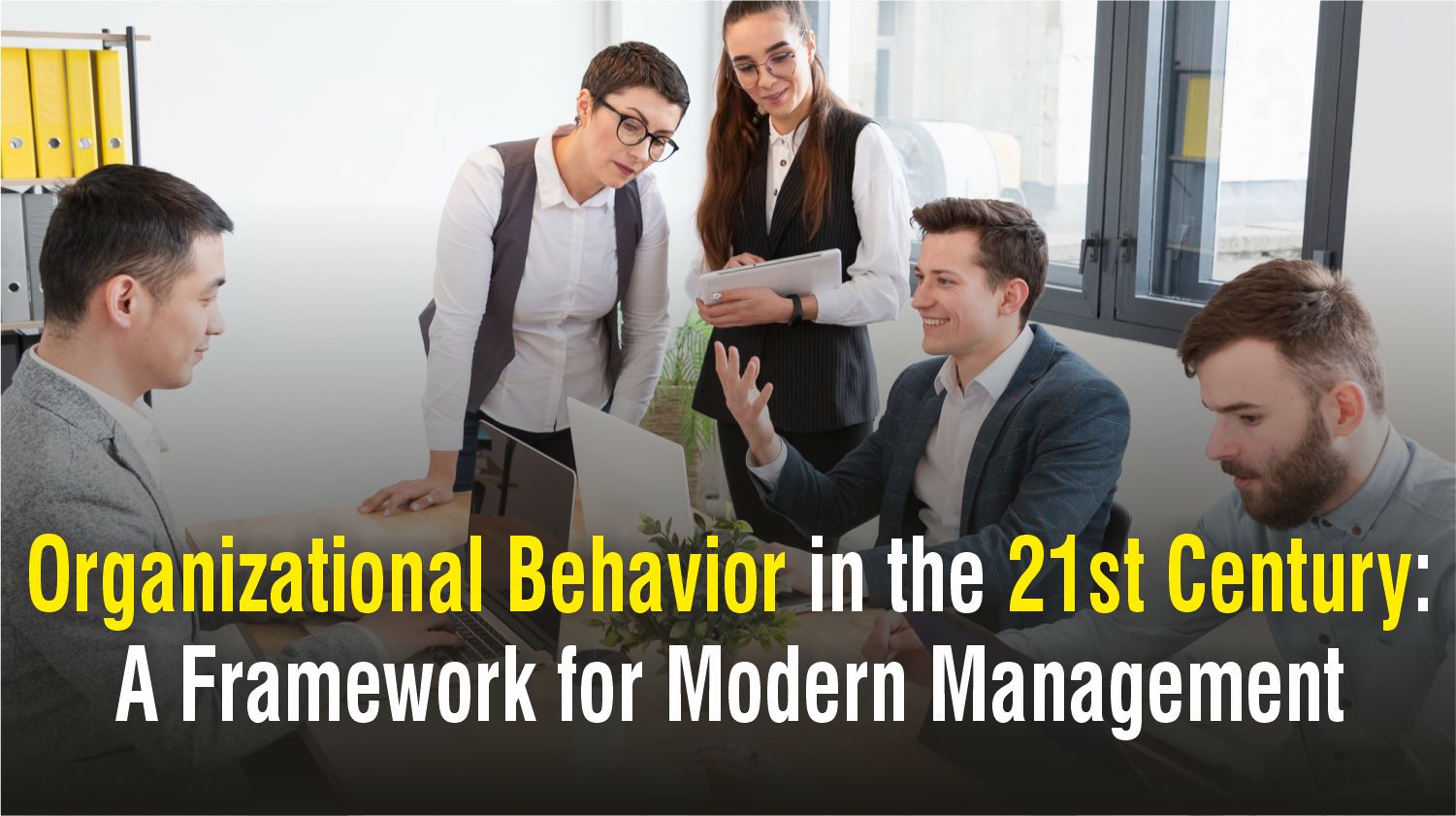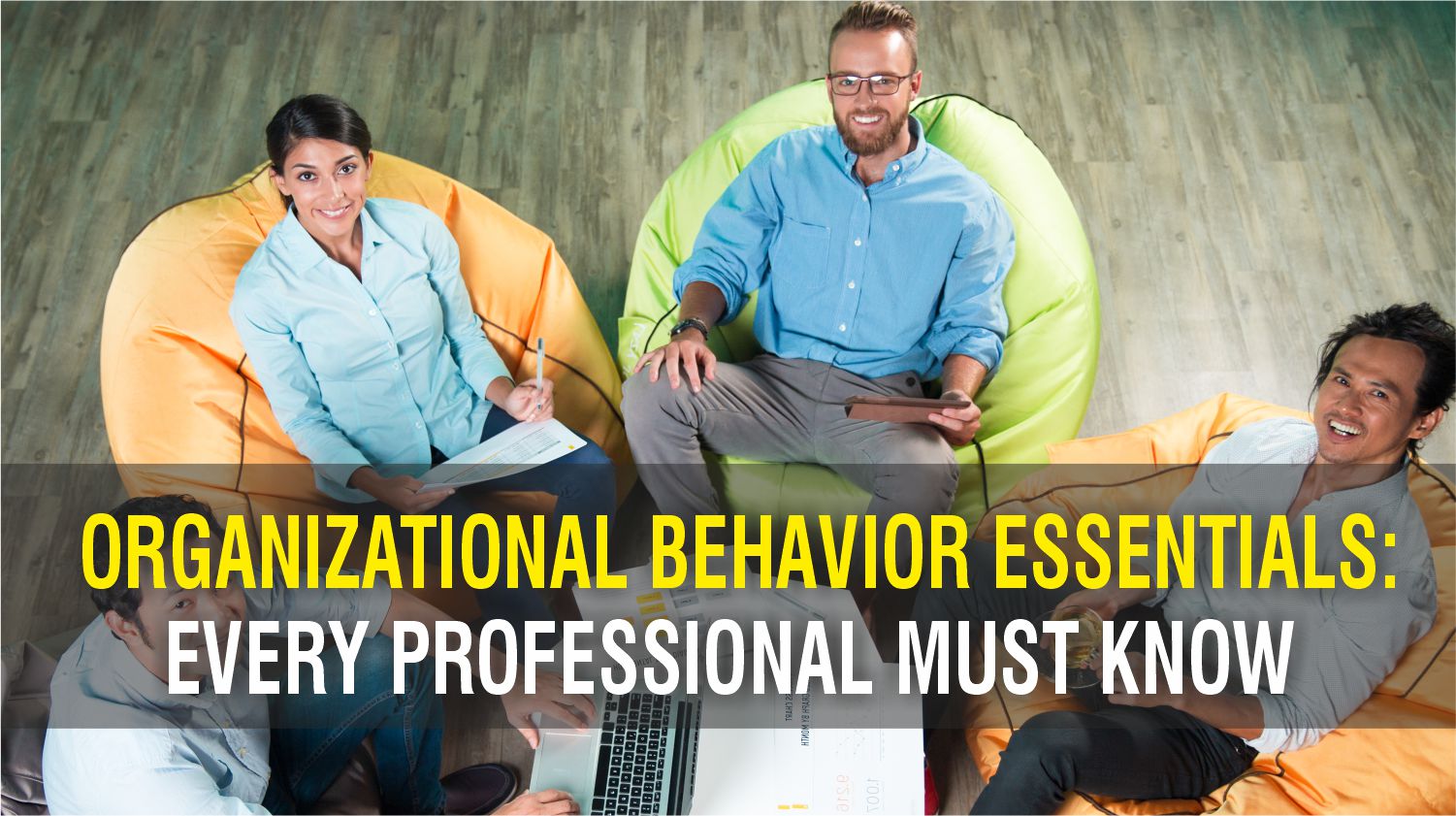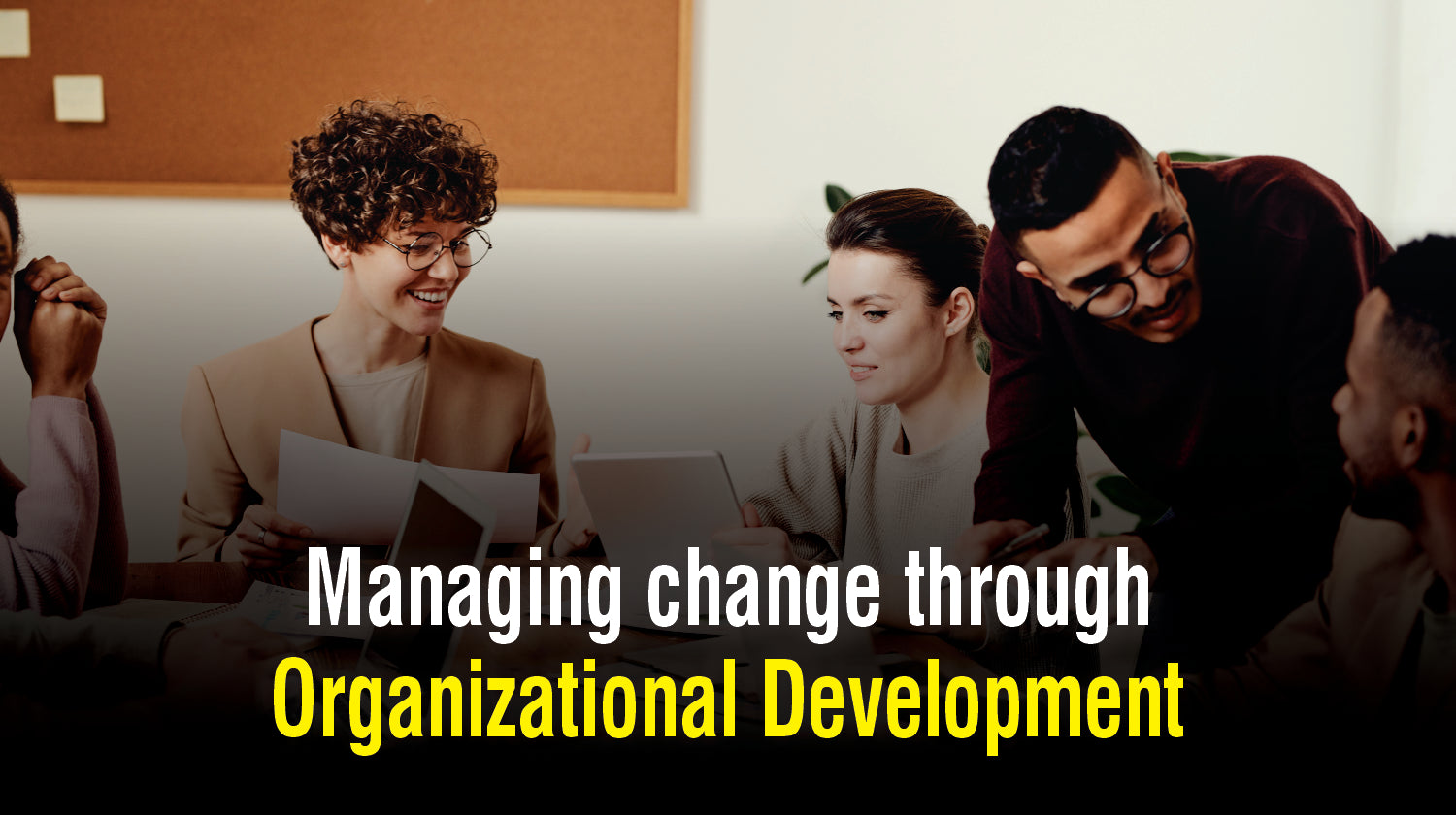Blogs on Human Resource Management

Organizational Behavior in the 21st Century: A Framework for Modern Management
by Vibrant Publishers on Jul 10 2024
Emerging from the human relations/ behavioral management movement of the 1920s, Organizational Behavior (OB) was a response to the shortcomings of traditional management approaches. It signaled a shift towards recognizing and harnessing the human element in organizations—a shift that remains as pertinent today as it was then. Despite the profound changes in the workplace landscape over the decades, the core principles of OB have stood the test of time. One concern, nonetheless, remains: Is OB still applicable in today's rapidly evolving workplaces?
The answer is a definitive yes! In fact, understanding the concepts of organizational behavior is more critical now than ever before. As workplaces become increasingly complex and diverse, the need to comprehend human behavior, motivation, and group dynamics becomes paramount. In this blog, we'll delve into the reasons why OB remains a vital component of effective management and why its relevance is more pronounced in today's dynamic work environments.
At the heart of any organization are its people. Regardless of technological advancements, organizations function through human effort and interaction. Organizational behavior studies the individual and collective behaviors within an organization. It examines personal factors influencing behavior and performance, offering insights that are instrumental in shaping effective management strategies. As Vic Clesceri, author of Organizational Behavior Essentials You Always Wanted To Know (2nd Edition) emphasizes, grasping OB principles “enables individuals to unlock their potential and contribute more effectively to their teams and organizations.”
The modern workplace is characterized by rapid technological advancements. Organizational behavior plays a pivotal role in helping organizations adapt to these changes. It assists in understanding how technology impacts employee behavior and performance. By providing insights into the integration of technology in work processes, organizational behavior aids in enhancing productivity and efficiency.
Globalization has led to increased diversity in the workforce. Organizational behavior emphasizes the importance of diversity and inclusion in today's organizations. It recognizes the value of different perspectives and experiences, fostering creativity and innovation. By promoting inclusivity, organizational behavior contributes to a positive work environment where all employees feel valued and respected.
Discrimination is still rampant against diverse identities, for instance, the LGBTQIA community. Taking measures to stop this discrimination and foster an inclusive workplace is crucial.
Organizational behavior provides a framework for collaboration within organizations. It helps individuals understand their roles within teams and organizations, facilitating effective communication and cooperation. By promoting a better understanding of team dynamics and organizational goals, organizational behavior enhances teamwork and overall organizational performance.
Conclusion:
Organizational behavior remains a vital aspect of modern management practices, offering valuable insights into human behavior, team dynamics, and organizational culture. By embracing the principles of OB, organizations can create a more inclusive, innovative, and adaptive workplace, ultimately leading to enhanced performance and success.
Also Read: Human Resources Management in the Modern WorldChoosing Organizational Development as a CareerUnderstanding why the human resource department is so vital for an organization

Organizational Behavior Essentials: Every Professional Must Know
by Vibrant Publishers on Apr 18 2024
In today's rapidly changing work culture, businesses and organizations are increasingly seeking individuals who are adaptable and capable of thriving in dynamic environments. This criterion emphasizes how vital it is to understand Organizational Behavior (OB). But what exactly does this term encompass?
At its core, Organizational Behavior is an interdisciplinary field that explores the interactions among employees and the processes within an organization, all aimed at cultivating a harmonious and efficient work environment. It examines individual behavior within a company, the dynamics of team collaboration, and the interconnected effects of these elements. Moreover, OB takes into account various cultural dimensions, including gender, ethnicity, and the social dynamics inherent in the workplace. For this reason, understanding the intricacies of organizational behavior becomes important, and the second edition of Organizational Behavior Essentials You Always Wanted to Know is here to supplement your understanding of the topic.
Front cover of Organizational Behavior Essentials You Always Wanted To Know - an all-in-one guide to understanding the intricacies of workplace dynamics.
About the Book:
Organizational Behavior Essentials (2nd Edition) is a book meticulously crafted to meet the diverse needs of its readers, presenting complex concepts in a clear and accessible manner. Vic Clesceri, author and expert in organizational development, understands the changing and challenging nature of keeping up with a company’s requirements and thus suggests useful tips and strategies that will be beneficial for professional success.
The book begins with a comprehensive overview of work dynamics within a global context, highlighting the pivotal role of inclusivity and diversity. It is structured into three main sections—individual, group, and organization—each exploring the relationships and dynamics within and between these levels.
Furthermore, the book delves into the theories and concepts crucial for understanding the intricacies of work and enhancing overall performance. Noteworthy features of the book include:
Practical explanations of theories
Relevant examples to enhance understanding
Simple language, avoiding technical jargon that might confuse readers
Chapter summaries for easy recollection and reference
In its latest edition, the book includes two additional chapters dedicated to addressing the evolving landscape of organizational environments. One of these chapters focuses on the necessity of change and how effectively navigating change can be a significant asset. The final chapter delves into various assessment tools essential for evaluating an individual's capacity to meet organizational goals. This enables individuals to identify areas for improvement, while organizations tailor their goals to align with individual potentials, thereby bridging any gaps in goal fulfillment.
In conclusion, Organizational Behavior Essentials not only equips readers with the knowledge and insights needed to navigate the complexities of modern work environments but also empowers them to drive positive change and foster a culture of inclusivity and innovation. By understanding and applying the principles of organizational behavior, individuals and organizations alike can cultivate a workplace that thrives in today's dynamic landscape.
So, embark on this transformative journey today and become a leader in shaping the future of work!
Order your copy from here.
Also Read: Human Resources Management in the Modern WorldChoosing Organizational Development as a CareerUnderstanding why the human resource department is so vital for an organization

Managing change through Organizational Development
by Vibrant Publishers on Oct 07 2022
When Bob Beamon jumped over 29 feet, almost 2 feet more than the previous record, it was thought that this would be an athletic record that would never be broken. Though the conditions were favorable, with a helpful breeze and the rarefied air of Mexico City, the record stood.
Do you think that record stood forever?
It did not. In 1991, Mike Powell jumped 2 inches higher in Tokyo and broke the record.
Nothing lasts forever. Change is a basic law of nature. In athletics, humans have endeavored to find better training and diet regimens as well as equipment of superior quality that have contributed to improvements.
The computing power of the machine that facilitated the first manned mission to the moon, is today held in a gaming console. Many of our mobile phones have more computing power than a roomful of machines in the seventies.
What is happening?
In one word - Change. Some call it development. Some call it human advancement and growth. In one form or another it is change.
What happens to organizations in times of change?
The simple answer is – the same as individuals and associations and governments and everything else. Organizations are not immune to this law of nature. They either keep up with the changing world or languish, or perish.
Corporate history is replete with examples of dominant corporations that succumbed to change.
At one time, Kodak was a household name in photography with a predominant share of the market the world over. Towards the end of the twentieth century, when digital technologies were rapidly on the rise, it appears that Kodak failed to adopt them fast enough, giving space to smaller, and nimbler, competitors to step up and take away market share from them. They could never catch up thereafter.
Another example is that of Nokia, the dominant global player in mobile phones. They failed to recognize the smartphone revolution that made Apple and Samsung household names in the first decade of the twenty-first century. They tried to play catchup but that is never easy.
Why would this happen?
While each situation is different, one of the common reasons seems to be that successful organizations are unwilling to kill off their golden goose, the one that made them rich and is the source of most of their revenue. And for what? For a newborn goose that has not proven itself and there is no certainty of it becoming another golden goose. They do not want to take this risk.
The trailing organizations, on the other hand, with much less to lose, are willing to take greater risks on newer products and technologies in an effort to get to a dominant position in the marketplace. Sometimes that works. And “the old order changeth, yielding place to new,” as Lord Alfred Tennyson wrote, plays out all over again.
What choices does an organization have?
Not taking a decision is also a decision. While the organization might believe that by not taking a decision, nothing will change, they have actually taken a decision of not changing anything, and that has ramifications.
They have chosen to be buffeted by the winds of change that sweep across the world, and seem to be gathering speed. They have chosen the path of reaction. On this path, action is usually taken when the risks of the change start becoming evident. Many times, it is already too late. The resetting process has already been initiated by the winds of change.
Is there an alternative?
Yes, there is an alternative. The alternative is ‘planned change.’
Planned change is a process that actively engages the organization in looking out into the future and identifying the winds of change that could impact them and its business model. It prepares the organization to handle the change.
Introducing planned change through Organizational Development
This is where Organizational Development (OD) becomes critical to an organization. OD is often seen as a discipline that enables an organization to mount an offensive against problems or issues they are facing, with the help of an OD expert or OD facilitator.
This definition or understanding of OD, while not incorrect, is limiting. OD has enabled many organizations to identify the root cause of some of their problems and created pathways to overcome those challenges.
An equally effective role is played by OD in situations where there is no problem currently identified.
Of course, OD cannot play this role on its own. The value it brings to the table is a structured process through which change can be implemented successfully. It is not an expert in the business of the organization. For identifying the needs and requirements of the organization, senior leaders involved in the business need to come to the party. They, in fact, are the ones who would be identifying the need for a change of strategy or a change of direction or the need for a new product, or the need to move out of a certain service. They are the ones who live and breathe the business, they interact with customers, competitors, and vendors and catch the waves and soundbites that emanate from each of these sources. They also analyze data and review information about their business as well as of the industry. With their collective knowledge, they are best placed to recognize the need for change.
In fact, going a step further, it is also their responsibility to ensure that an OD expert is involved once they have been able to identify the need. Of course, with the expert’s involvement and data gathering, the need initially identified could also undergo change.
Organizational Development introduces planned change designed to meet one or more goals of the organization. It is usually managed as a distinct activity, separate from the day-to-day operations of the company, and follows a designed sequence of steps and processes. It is an interdisciplinary field with components coming from various disciplines.
The upcoming book “Organizational Development Essentials You Always Wanted To Know” covers all the ‘essential’ concepts of the emerging discipline of OD. The book is now available for advance review on NetGalley!

